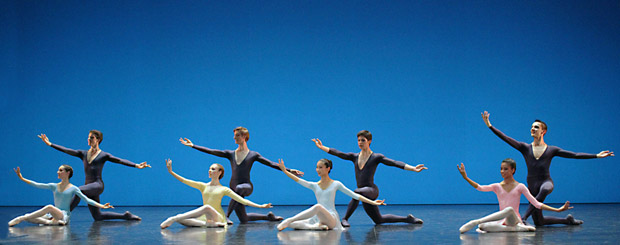
Paris Opera Ballet School
Spectacle École de Danse:
Variations,
chor. Violette Verdy, music Johannes Brahms
Le Bal des Cadets – Graduation Ball,
chor. David Lichine, music Johann Strauss fils
Symphonie en Trois Mouvements,
chor. Nils Christe, music Igor Stravinsky
Paris, Palais Garnier
13 April 2012
School web page
Student performances are, at their core, about potential. What will become of these dancers? What can they already do and of what might they be capable? Thanks to this lively program, which mixed classical and contemporary dance and was put together by head of school, Elisabeth Platel, it’s evident that the students of the Opera National de Paris’ École de Danse are overflowing with promise. Of course, there’s perhaps no better setting to reveal such promise than the one for this performance: the beautiful Palais Garnier, which is in itself a work of art.
The curtain rose on Violette Verdy’s Variations to show off four couples. The boys wore dark blue unitards, while the girls had on simple leotards with attached skirts in bright colors: yellow, pink, light blue, more blue. They acknowledged the pianist (Ellina Akimova, on stage with them) and then began to move. This ballet was broken up into sections according to many small pieces from Brahms’ Variations sur un thème de Paganini, op. 35 – too many to count. Each piece brought a new combination of dancers to the stage: a boy, a girl, duets, trios, all the boys, and then all the girls. Rarely did we get all eight on stage simultaneously.

Variations was pleasant and surprisingly challenging, its steps difficult but not showy, and all these young people danced those steps with care. By this I mean that they seemed reverent about the steps, the music, and perhaps the chance to be on a grand stage in such a great theater – and also that they were careful, almost cautious. There were no high kicks to the ears, no leaps over 180 degrees, no absolute abandon. Instead, they offered delicacy and control. Repeatedly, the girls crossed the stage on pointe, picking their way past with bent knees, torsos forward (shades of Emeralds, perhaps?). The boys got more humorous steps: a fall into the splits, a pirouette to the ground. They seemed grounded: their partners aerial.
A special treat came during the bows. An elegant blonde woman dressed in red snuck on stage briefly and then off again: Violette Verdy.
The second piece on the program provided contrast, a chance for the dancers to mime and show their comic chops in David Lichine’s Le Bal des Cadets (aka Graduation Ball), set to many familiar tunes by Strauss. As in Verdy’s piece, the students performed with fine technique, respect, and care. Ably partnered by Leeroy Boone as the First Cadet, Roxane Stojanov took center stage again here as the Young Girl, although I preferred her in Variations.
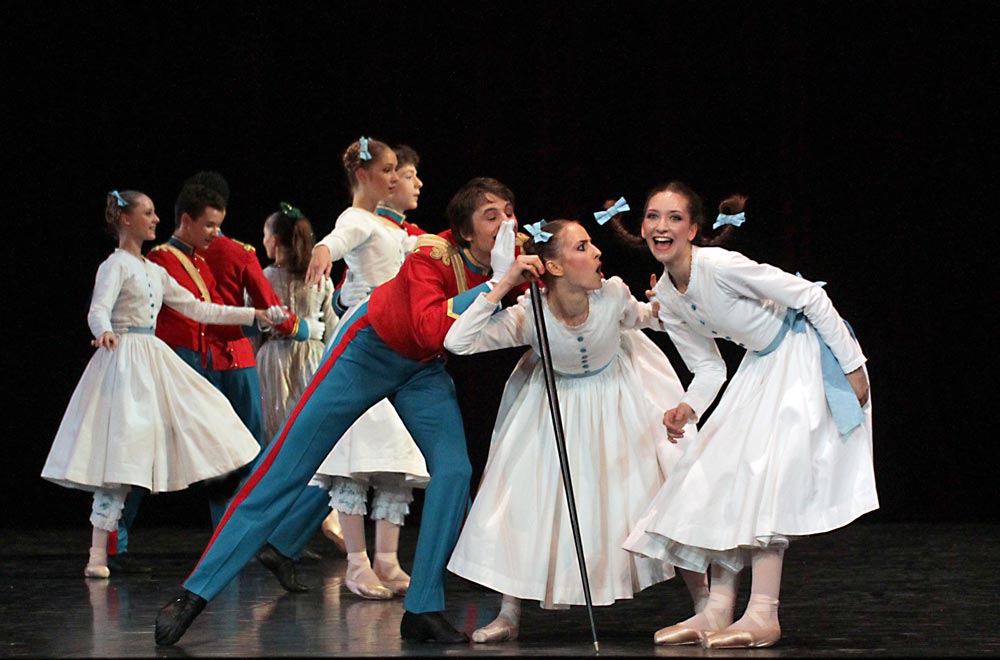
While the two fouetté girls, Anaïs Kovacsik and Nine Seropian, could have been stronger – they both got through all their steps, but not without a few bobbles and gritted teeth – this choreography is unforgiving: fouettés, then consecutive turns in attitude devant, and later pirouettes from fifth position, all performed on the same supporting leg. However, perhaps these roles didn’t give them the chance to show all they could do: when presented with a wider variety of steps, Kovacsik performed beautifully in Nils Christe’s Symphonie en Trois Mouvements.
And what a variety of movement there was in this Symphonie, the contemporary piece set to music by Stravinsky that closed the program. Symphonie brought both an abandon, which I’d been hoping for earlier, and a sense of adulthood from the dancers. In the piece, which was set in shadows against a dark backdrop, the dancers wore flimsy black pants and dresses (during the bows, it became apparent they had blue and purple fabrics hidden beneath the black, upon their torsos). Symphonie’s boys shone: repeatedly, they sliced across the stage, their arms shooting out into perfectly straight horizontal lines, only to fall back on themselves, arms bent inwards at the elbows and wrists with fingers touching. They looked like insects. The girls, despite their lack of pointe shoes, mostly had to bourrée instead of run, but their intensity matched that of the boys.
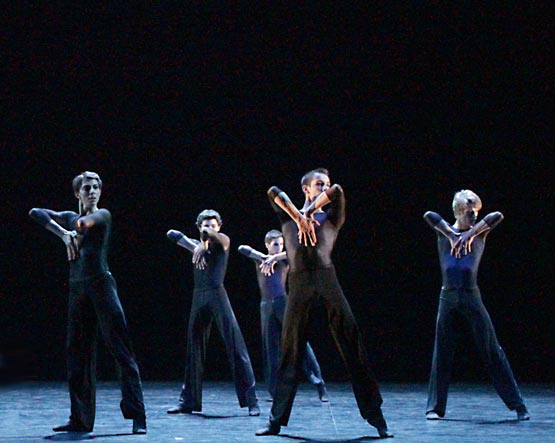






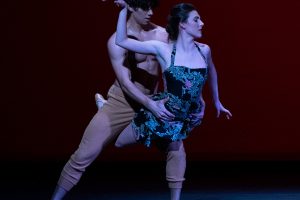


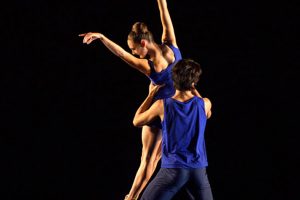




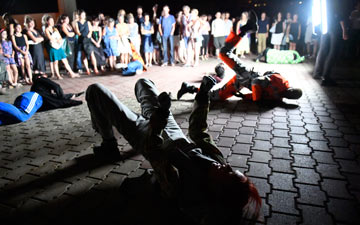

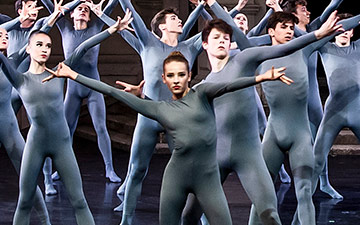
You must be logged in to post a comment.